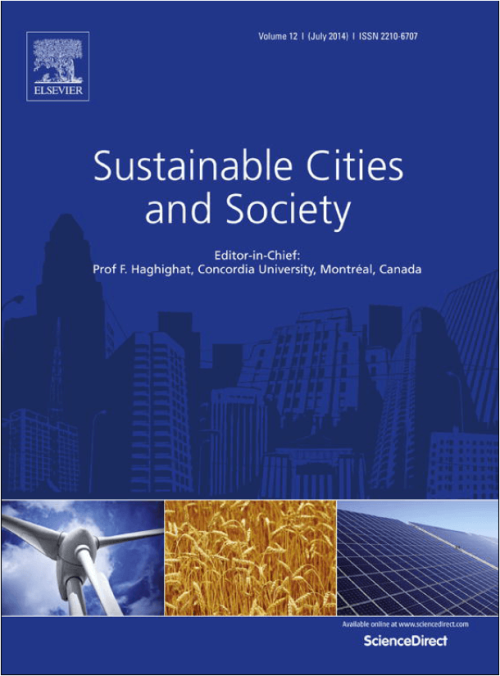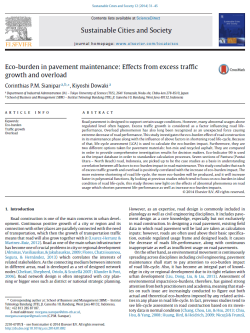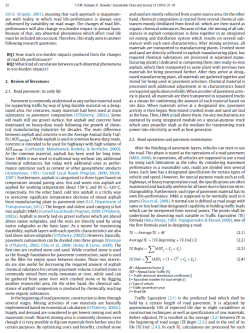
Eco-burden in pavement maintenance: Effects from excess traffic growth and overload
2014 • C.P.M. Sianipar and K. Dowaki
Abstract. Road pavement is designed to support certain usage conditions. However, many abnormal usages above regulated level often happen. Excess traffic growth is considered as a factor influencing road life-performance. Overload phenomenon has also long been recognized as an unexpected force causing extreme decrease of road performance. This study investigates the eco-burden effect of road construction in its maintenance phase along with the influence of above factors in shortening road life-cycle. Because of that, life-cycle assessment (LCA) is used to calculate the eco-burden impact. Furthermore, there are two different options taken for pavement materials: hot-mix and recycled asphalt. They are compared in order to provide comprehensive investigation results for decision makers. Eco-Indicator 99 is used as the impact database in order to standardize calculation processes. Seven sections of Pantura (Pantai Utara – North Beach) road, Indonesia, are picked up to be the case studies as a basis in understanding correlation between all factors to eco-burden impact in road maintenance. This study concludes that each of excess traffic growth and overload is positively correlated with the increase of eco-burden impact. The more extreme shortening of road life-cycle, the more eco-burden will be produced, and it will increase faster in polynomial functions. By looking at previous studies which tend to focus on eco-burden in ideal condition of road life-cycle, this study throws new light on the effects of abnormal phenomena on road usage which shorten pavement life-performance as well as increase eco-burden impacts.
DOI: 10.1016/j.scs.2014.01.002
Citation Styles
MLA Style Manual (Modern Language Association)
- Sianipar, Corinthias PM, and Kiyoshi Dowaki. “Eco-burden in pavement maintenance: Effects from excess traffic growth and overload.” Sustainable Cities and Society 12 (2014): 31-45.
APA Citation Format
- Sianipar, C. P.M., & Dowaki, K. (2014). Eco-burden in pavement maintenance: Effects from excess traffic growth and overload. Sustainable Cities and Society, 12, 31-45.
CMOS (Chicago Manual of Style)
- Sianipar, Corinthias PM, and Kiyoshi Dowaki. “Eco-burden in pavement maintenance: Effects from excess traffic growth and overload.” Sustainable Cities and Society 12 (2014): 31-45.


